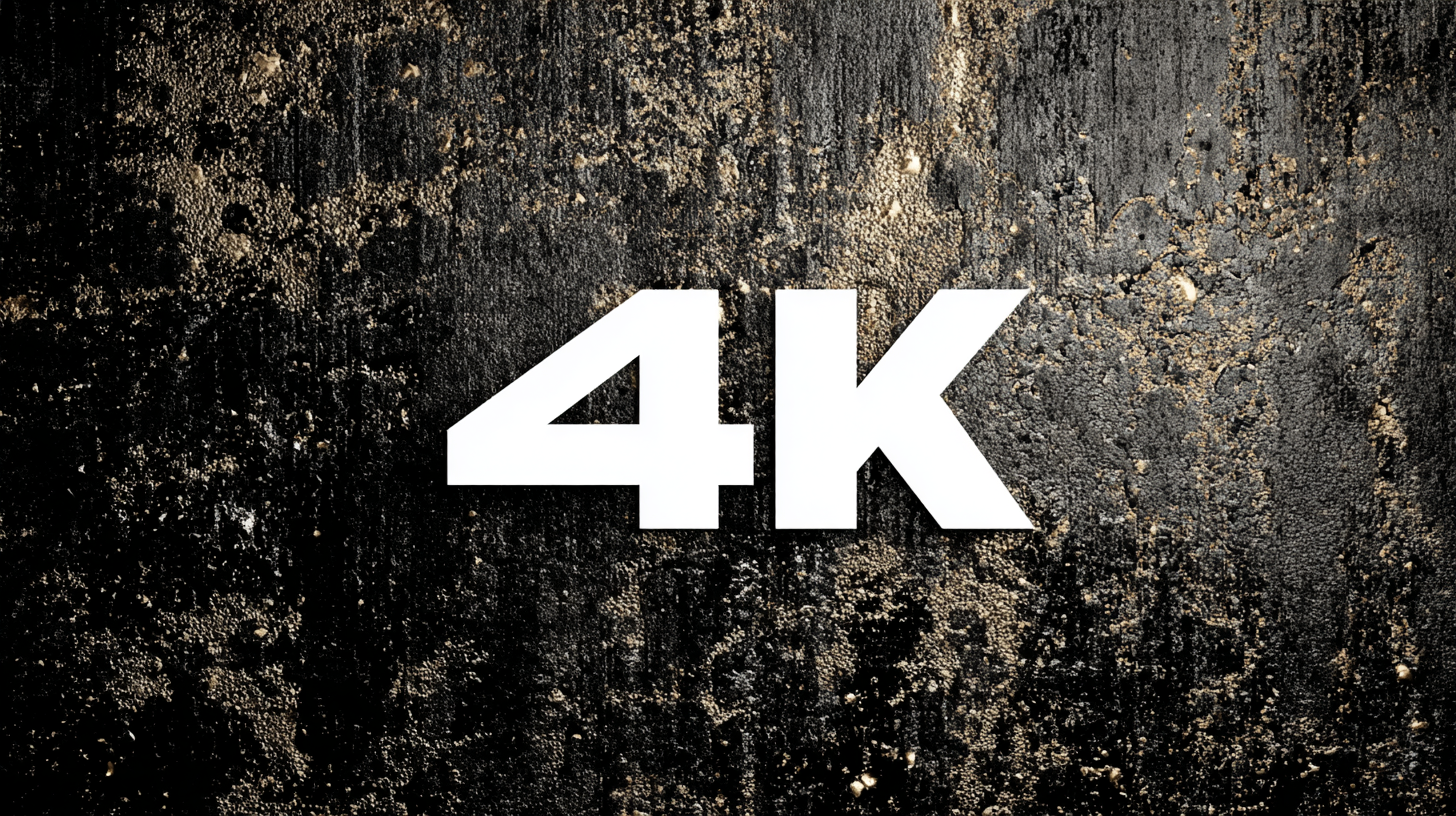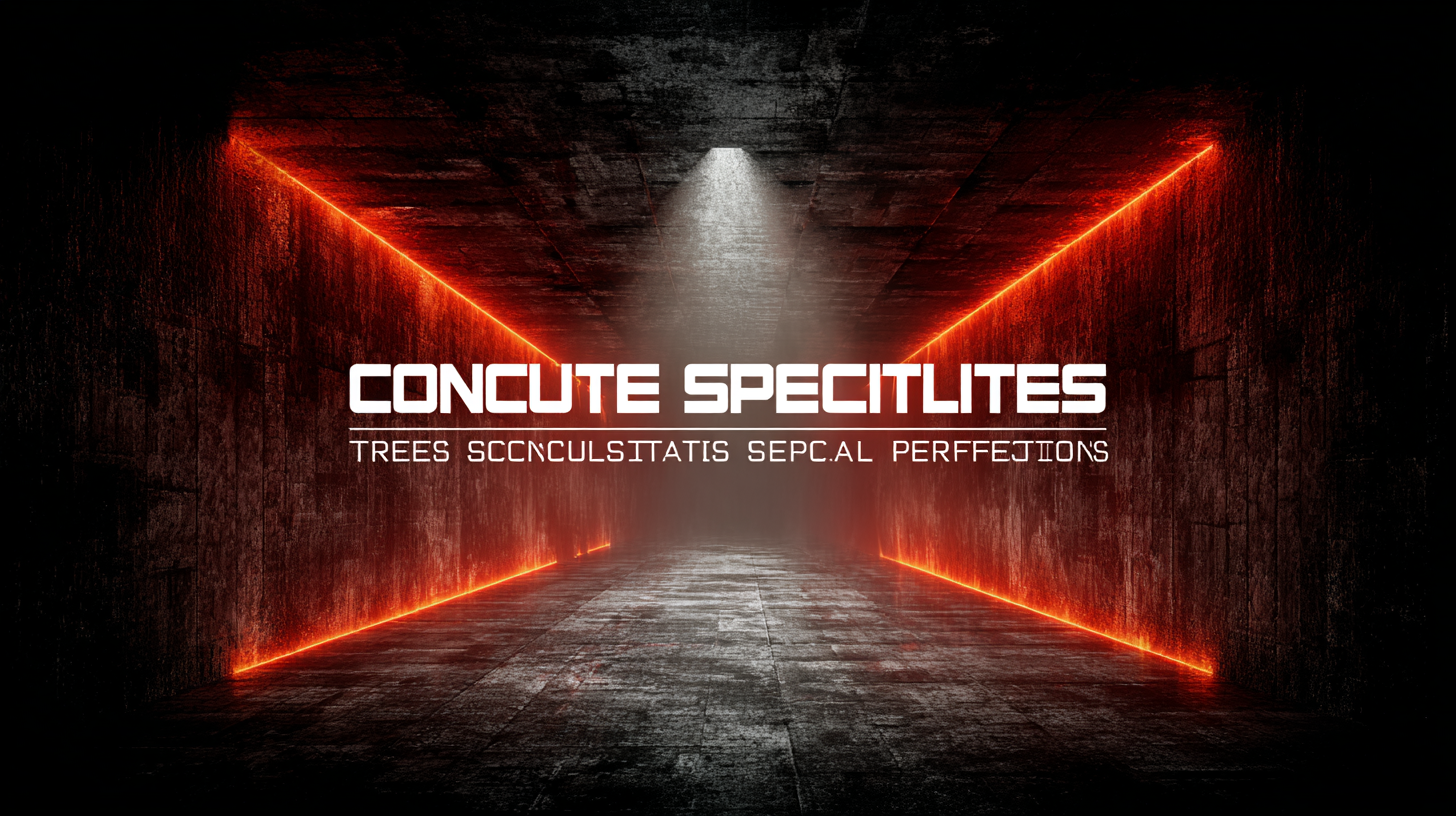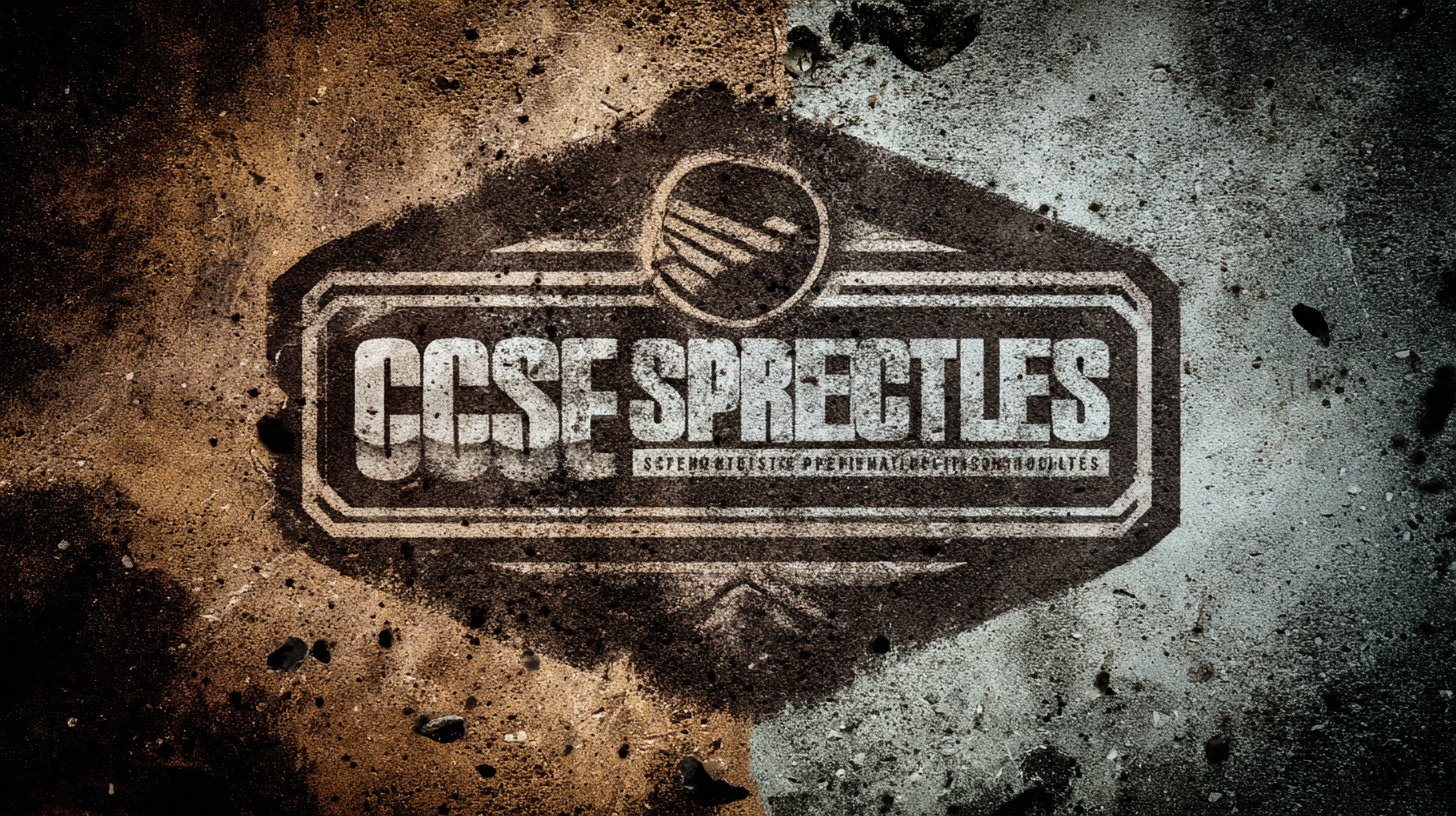Unveiling the Technical Specifications of the Best Concrete Specialties for Optimal Performance
In the dynamic landscape of construction materials, "Concrete Specialties" have emerged as pivotal components that significantly enhance structural integrity and longevity. According to a recent market analysis by Mordor Intelligence, the global specialty concrete market is projected to reach USD 120 billion by 2025, growing at a CAGR of 6.2% from 2020 to 2025. This impressive growth is driven by the increasing demand for durable and high-performance materials in the construction industry, particularly in emerging economies. As manufacturers focus on innovative formulations and advanced applications, the need for understanding the technical specifications of these concrete varieties becomes crucial. This blog will unveil the intricacies of the best concrete specialties, showcasing how cutting-edge manufacturing techniques, primarily sourced from China, are revolutionizing the global market and ensuring optimal performance across diverse construction projects around the world.

Key Features of High-Performance Concrete: Insights from China’s Leading Manufacturers
The realm of high-performance concrete (HPC) is revolutionizing construction practices, particularly through innovations emerging from China’s leading manufacturers. These key players are focusing on specific attributes that elevate concrete applications in modern infrastructure. One notable feature is the incorporation of advanced admixtures, which enhance the durability and strength of concrete while reducing water permeability. This characteristic is crucial for structures exposed to harsh environmental conditions, ensuring longevity and resilience.
Another significant aspect is the optimization of concrete mix designs. Manufacturers are investing in cutting-edge technology and research to create tailored blends that meet diverse project requirements. For instance, the use of supplementary cementitious materials like fly ash and slag is becoming increasingly prevalent, allowing for better workability and lower carbon emissions. Additionally, these high-performance concrete mixtures provide improved load-bearing capacity, making them ideal for high-rise buildings and heavy traffic roadways. The insights from these manufacturers not only highlight the importance of innovation in concrete technology but also emphasize the commitment to sustainable construction practices.
Innovative Technologies Driving Concrete Specialty Advancements in Export Markets
Innovative technologies are revolutionizing the concrete specialties industry, particularly in export markets where demand for high-performance materials is surging. Recent industry reports indicate that the global concrete additives market is projected to reach USD 20 billion by 2025, with a compound annual growth rate (CAGR) of approximately 6% from 2020 to 2025. This growth is largely driven by the increasing need for durable and sustainable construction materials that can withstand varying environmental conditions.
One of the most significant advancements is the development of polymer-modified concrete (PMC), which enhances adhesion and flexibility, making it ideal for diverse applications, including infrastructure renovations and new constructions. According to a 2022 Technavio report, the PMC segment is expected to grow by over 15% during the forecast period due to rising investments in infrastructure development worldwide. Furthermore, the integration of nanotechnology into concrete production is improving the material's strength and longevity, attracting attention in emerging markets where infrastructural demands are escalating. These innovative approaches not only elevate performance but also align with sustainability goals, catering to modern construction needs.
Comparative Analysis: China vs. Global Competitors in Concrete Specialty Production
The concrete specialty market has witnessed significant growth, and recent analyses highlight the competitive landscape between Chinese manufacturers and their global counterparts. According to a report by MarketsandMarkets, the global concrete specialty market is projected to reach USD 2.4 billion by 2025, growing at a CAGR of 6.2%. China, being the largest consumer and producer of concrete, accounts for approximately 50% of this growth due to its rapid urbanization and infrastructure development initiatives.
When examining the production capabilities, Chinese companies like CNBM and Anhui Conch Cement have leveraged advanced technologies and economies of scale to achieve lower production costs and greater efficiency. A comparative study by ResearchAndMarkets reveals that these companies are able to produce specialty concrete products at a 20% lower cost than their European counterparts, while maintaining similar quality standards. This cost advantage enables Chinese manufacturers to dominate emerging markets while steadily expanding their presence in developed regions, posing a significant challenge to established players in the United States and Europe.
Unveiling the Technical Specifications of the Best Concrete Specialties for Optimal Performance - Comparative Analysis: China vs. Global Competitors in Concrete Specialty Production
| Specification | China | Global Competitors |
|---|---|---|
| Compressive Strength (MPa) | 45 | 42 |
| Flexural Strength (MPa) | 6.5 | 6.0 |
| Durability Rating | High | Moderate |
| Cost per Cubic Meter ($) | 75 | 85 |
| Setting Time (Hours) | 4 | 5 |
Sustainability Practices in China’s Concrete Industry: A Look at Eco-Friendly Materials
China's concrete industry is undergoing a significant transformation, focusing on sustainability practices that aim to reduce environmental impact while maintaining performance excellence. According to a report by the China Cement Association, the country has made notable strides in utilizing eco-friendly materials. A prime example is the increasing incorporation of supplementary cementitious materials (SCMs) such as fly ash and slag, which not only help in reducing carbon emissions but also enhance the durability and strength of concrete. Recent studies indicate that using SCMs can reduce the carbon footprint of concrete by up to 30%, showcasing a crucial step toward greener construction methods.

In addition to SCMs, the rise of recycled aggregates is reshaping material consumption in concrete production. The Ministry of Housing and Urban-Rural Development of the People's Republic of China highlighted that the use of recycled aggregates can potentially lower the demand for natural resources by 20%, significantly diminishing waste and promoting a circular economy. Innovations like geopolymer concrete, which incorporates industrial by-products, are also gaining traction. These materials not only contribute to sustainability efforts but also offer superior resistance to environmental degradation. The commitment to utilizing eco-friendly materials is becoming a benchmark for performance and sustainability in China's concrete sector.
Case Studies: Successful Implementations of Concrete Specialties in Various Sectors
Concrete specialties have become critical in various industries, offering tailored solutions that enhance structural integrity and performance. In the construction sector, for example, the adoption of high-performance concrete (HPC) has shown remarkable results. According to the American Concrete Institute (ACI), using HPC can improve compressive strength by up to 50% compared to traditional concrete, enabling structures to withstand greater loads and resist environmental wear more effectively. This technology was successfully implemented in the construction of the San Francisco-Oakland Bay Bridge, where HPC significantly contributed to the bridge's durability and longevity.
Another notable application is in the wastewater management sector. The use of fiber-reinforced concrete (FRC) in building treatment plants has been proven to reduce cracking and increase overall tensile strength. A report from the American Water Works Association reveals that FRC can cut maintenance costs by as much as 20% in wastewater infrastructure projects. The implementation of FRC in the Denver Wastewater Treatment Plant not only improved the facility's resilience but also provided a more sustainable option by extending the lifespan of concrete structures. These case studies highlight the diverse applications and benefits of concrete specialties, driving optimal performance across different sectors.

